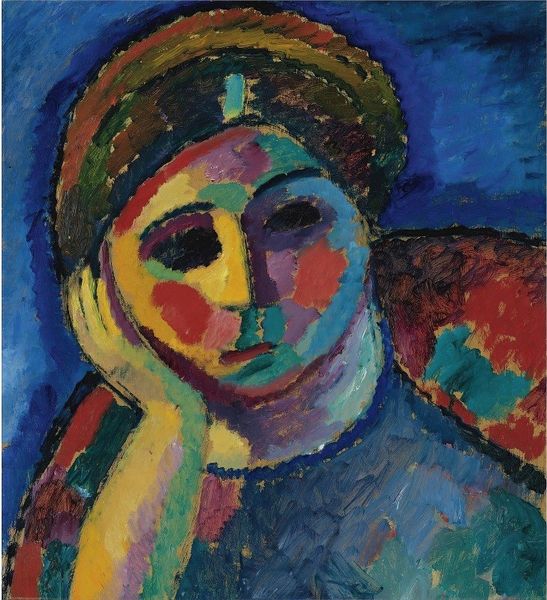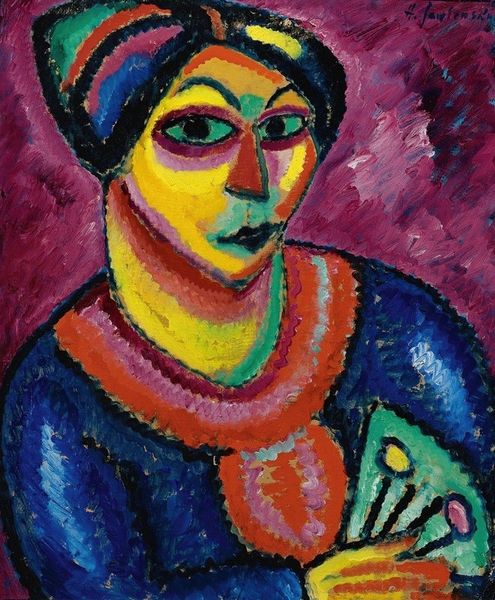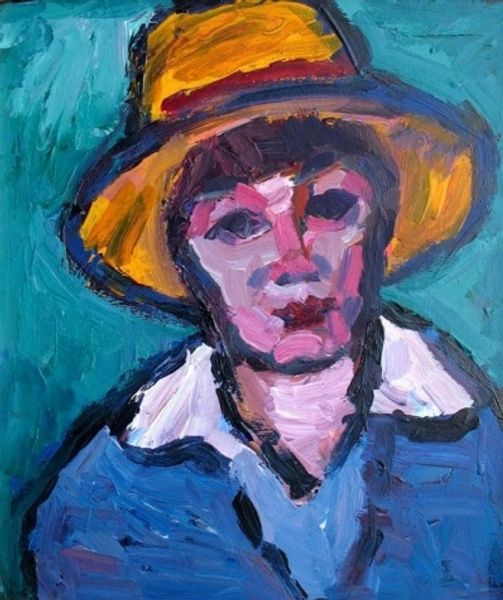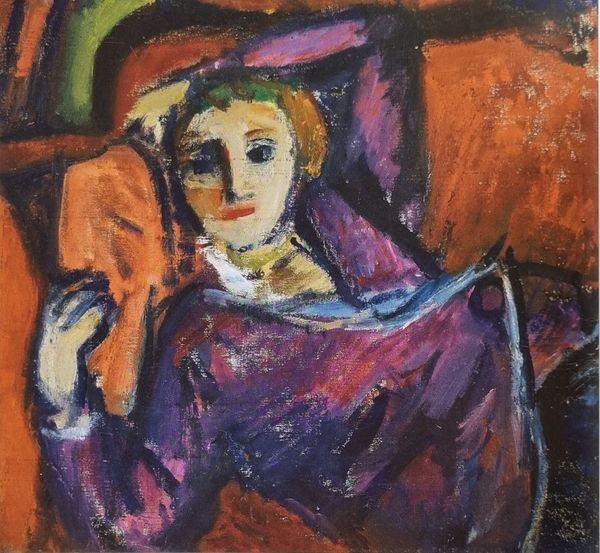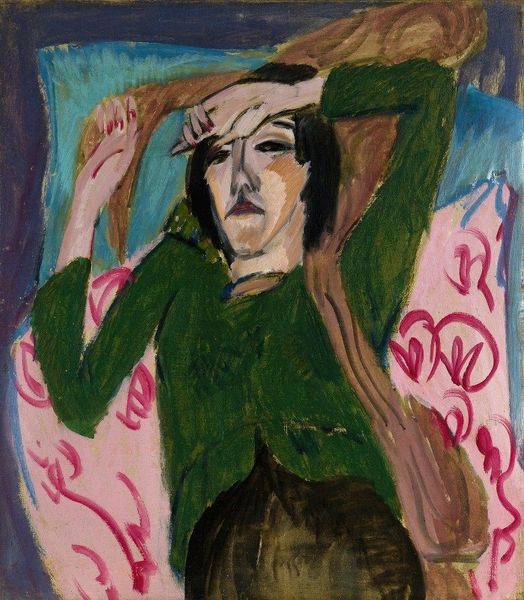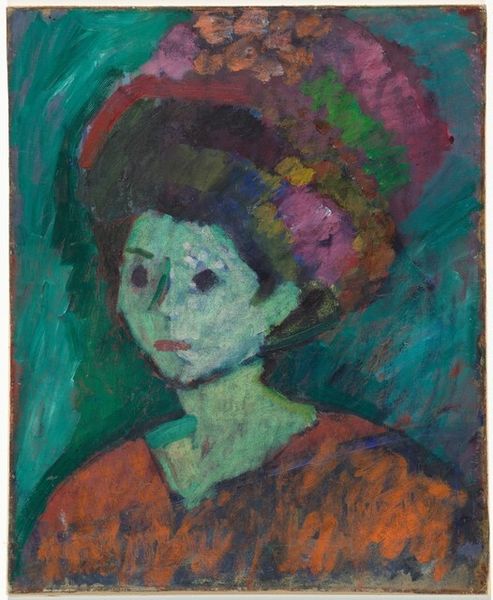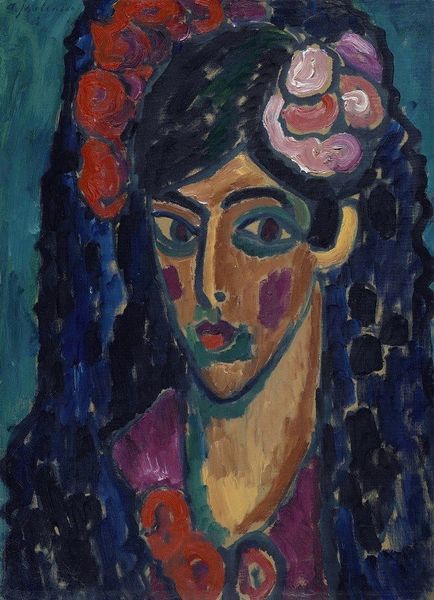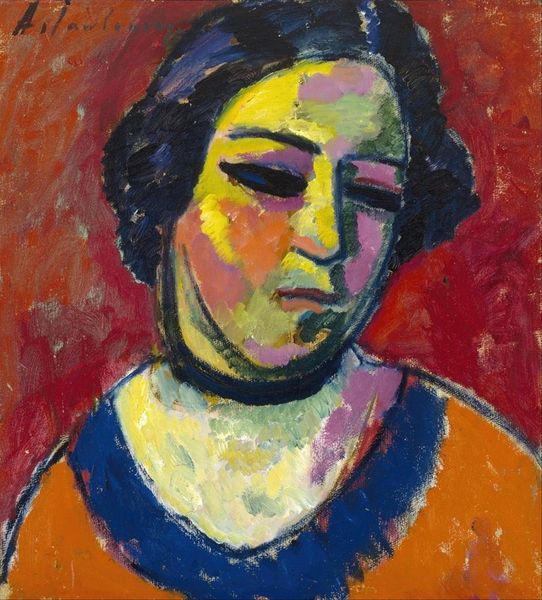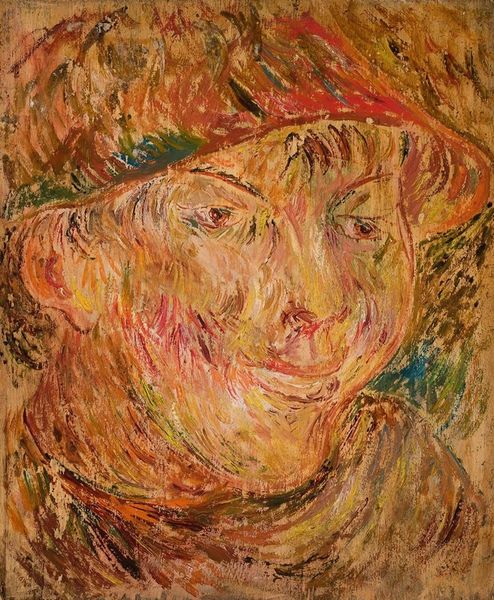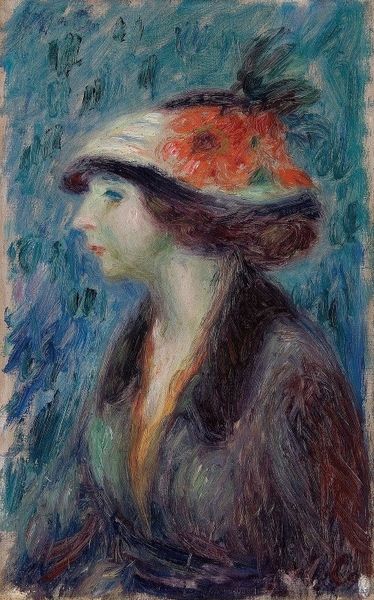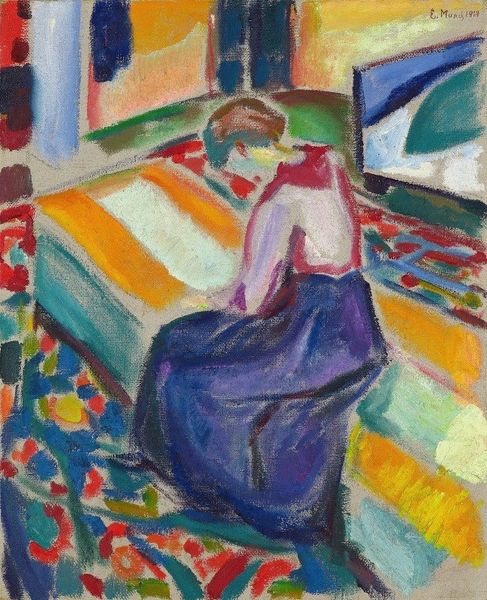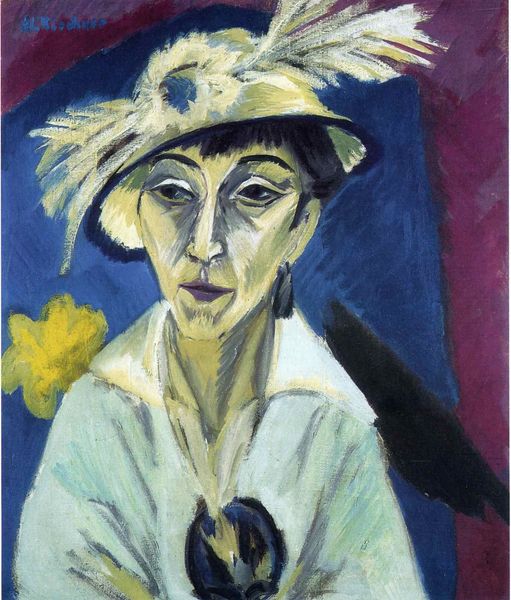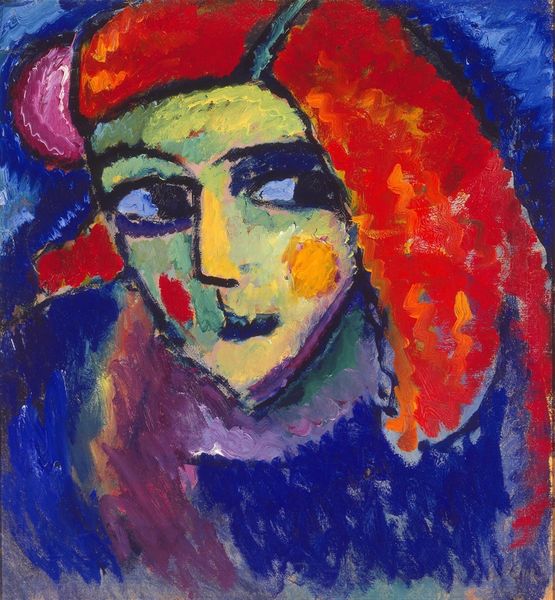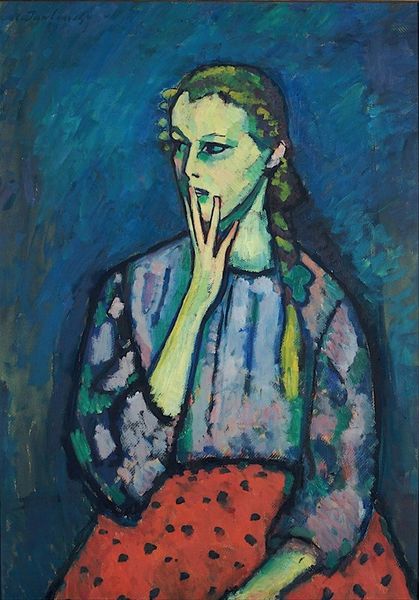
Copyright: Public Domain: Artvee
Curator: Here we see Edvard Munch's oil painting, "Birgit Prestøe in the Garden," estimated to have been created sometime between 1924 and 1930. What are your first impressions? Editor: Melancholy. The heavy strokes of green give the sense of overgrown, untamed nature pressing in, mirroring the somber expression of the subject. Her averted gaze and slumped posture evoke a sense of quiet introspection. Curator: It's important to contextualize this within Munch's later period. He was moving away from the intense psychological dramas of his earlier expressionist works like "The Scream," towards a more nuanced engagement with portraiture and landscape. Birgit Prestøe was a frequent model for Munch during this period. Editor: Absolutely. It makes me think about the societal constraints placed on women, particularly in the early 20th century, reflecting the limited roles they often occupied. Is the garden symbolic of a space both of refuge and restriction? Is her downturned face emblematic of societal constraint? Curator: Possibly. While Munch was certainly exploring themes of isolation and interiority throughout his career, we also have to consider the performative aspect of portraiture. Models often adopt poses and expressions that were considered fashionable or socially acceptable at the time. And, it is relevant to understand that during the time of creation and even for the following decades, art was judged by a primarily patriarchal standard. Editor: That’s valid, but looking through an intersectional lens, her gaze and pose make me wonder about the intersection of gender, class, and personal agency. Does her social standing allow her more freedom or less? Her hat seems upper class but does the setting hint at restriction? What expectations was she under? Curator: These questions are always enriching to the conversation. Munch painted her multiple times; analyzing those portraits collectively might reveal deeper insights into her evolving social standing. Editor: Perhaps. The power dynamics between artist and sitter also warrant exploration, especially considering Munch's personal history and complex relationships with women. There may have been issues between Munch and the model herself. Curator: These portraits from the 1920s represent a stylistic shift for Munch. He was experimenting with lighter palettes, broader brushstrokes, and a more relaxed approach to form, influenced perhaps by Impressionism and a changing European milieu post-World War I. Editor: A stylistic shift, yet that weight in her posture, that submersion in greens still hits with such feeling. Art doesn't exist in a vacuum, does it? Looking at works like these requires engagement with history, gender dynamics, class constructs, everything. Curator: It truly becomes richer that way.
Comments
No comments
Be the first to comment and join the conversation on the ultimate creative platform.
